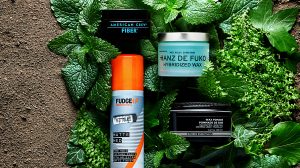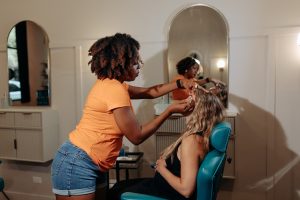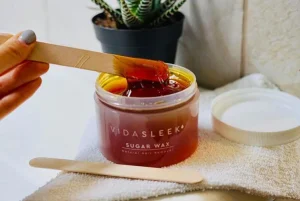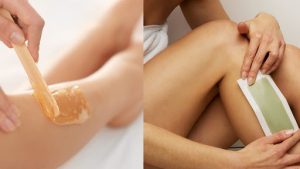
Hair waxing tips. Prepare your skin for optimal waxing results by cleaning, drying, and exfoliating it 24 hours in advance. Make sure your hair is 1/4 to 1/2 inch long, and trim it if it is longer. Apply wax with your hair growth, pull quickly against it while keeping your skin taut, and wear loose clothing afterward. Steer clear of retinoids and medications, stay hydrated, and use calming products to prevent irritation and ingrown hairs. For people looking for smooth, long-lasting hair removal, hair waxing is a great choice. Whether you decide to go to a salon or wax at home, knowing the procedure and taking care of yourself properly can help you get the finest results. Smoother skin, finer regrowth, and a more convenient beauty routine are all possible with regular waxing.
HAIR WAXING TIPS
The process of hair removal involves applying a warm or cold wax to the skin, which adheres to the hair. Once the wax cools and hardens (in the case of warm wax) or binds to the hair (in the case of cold wax), it’s quickly pulled off in the opposite direction of hair growth, removing the hair from the root. The result is smooth, hair-free skin that can last from three to six weeks, depending on your hair growth cycle.
Types;

There are several types of wax used for hair removal, each with its own benefits:
– Soft Wax: This type of wax is applied warm and removed with a cloth strip. It’s great for large areas like legs and arms, as it can cover large sections of skin quickly.
– Hard Wax: Applied warm, hard wax cools and hardens on the skin. It’s removed without strips and is ideal for smaller, sensitive areas like the face, underarms, and bikini line. Hard wax is often preferred because it’s less painful and more gentle on the skin.
– Cold Wax: This pre-applied wax is used on strips, making it a convenient option for at-home waxing. Cold wax doesn’t require heating, but it may be less effective on thicker hair.
Benefits of Waxing;

HAIR WAXING TIPS
– Long-Lasting Results: Because waxing removes hair from the root, it takes longer for hair to grow back compared to shaving. This means you can enjoy smooth skin for several weeks.
– Finer Regrowth: Over time, hair that grows back after waxing tends to be finer and sparser, making future waxing sessions easier and less painful.
– Exfoliation: Waxing not only removes hair but also exfoliates the skin, removing dead skin cells and leaving your skin smoother.
Things to Consider;

HAIR WAXING TIPS
– Pain:
Waxing can be uncomfortable, especially for those new to the process or waxing sensitive areas. The pain typically decreases with regular waxing as hair becomes finer.
– Skin Sensitivity:
Waxing can cause temporary redness, irritation, or ingrown hairs, particularly for those with sensitive skin. It’s important to follow post-wax care instructions, such as avoiding sun exposure and exfoliating the area to prevent irritation.
– Hair Length: For waxing to be effective, hair needs to be about 1/4 inch long. If hair is too short, the wax may not grip it well; if too long, it can increase discomfort during removal.
At-Home vs. Professional Waxing;

HAIR WAXING TIPS
While at-home waxing kits are convenient and cost-effective, professional waxing services offer a more comfortable experience with better results, particularly for tricky areas like the bikini line or eyebrows. A trained esthetician can ensure proper technique and hygiene, reducing the risk of skin irritation or injury.
Summary
A common hair removal technique that leaves the skin smooth and hair-free for weeks is hair waxing. Waxing removes hair from the root, resulting in slower regrowth and finer hair over time, in contrast to shaving, which cuts hair at the surface. Here’s what you need know about this efficient hair removal method, whether you want to wax your bikini line, legs, or underarms.